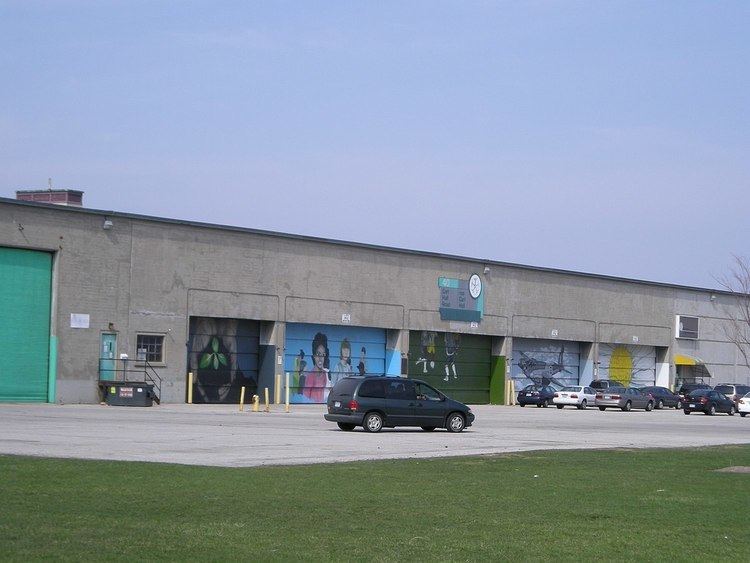Province Ontario | Opened 1929 | |
 | ||
Closed April 1, 1996 (1996-04-01) Occupants | ||
F 5e cfb toronto june 1 2013 been there done that
Canadian Forces Base Toronto (also CFB Toronto) is a former Canadian Forces base in Toronto, Ontario. The airfield is currently operated as Toronto/Downsview Airport.
Contents
- F 5e cfb toronto june 1 2013 been there done that
- RCAF Station Downsview
- CFB Toronto
- Military housing
- Downsview Park
- Former units
- Current units
- Aircraft
- Static display
- References
RCAF Station Downsview
The Downsview Lands were part of an extensive land parcel acquired by the British Crown in 1787 from the Mississauga Nation in what is referred to as the Toronto Purchase. "Downsview" received its name in the 1830s after a farm on the property that was called "Downs View", attributed to its commanding vista of Lake Ontario to the south, looking "down" from the plateau. The area was connected with Toronto in the 1850s when Dufferin Street and the Northern Railway were constructed.
In 1929 the de Havilland Aircraft of Canada constructed an aircraft manufacturing plant, hangar and airfield at a property known as Downsview north of Toronto's central business district. Following World War II, the Department of National Defence was in need of property for stationing Royal Canadian Air Force squadrons to protect the concentration of industry and population in southern Ontario. In 1947, the federal government acquired and consolidated 270 properties in Downsview surrounding the De Havilland manufacturing plant. This large tract was developed in the ensuing years as RCAF Station Downsview and became part of the Canadian military's front-line defence of the region.
CFB Toronto
The February 1, 1968, unification of the RCAF, Royal Canadian Navy and Canadian Army to form the Canadian Forces saw RCAF Station Downsview renamed Canadian Forces Base Toronto (Downsview), later shortened to just Canadian Forces Base Toronto (or CFB Toronto).
Operational units continued to use CFB Toronto through the 1970s and 1980s; however, municipal planners and real estate developers were increasingly coveting the property during Toronto's unprecedented urban development during this period.
The first of several non-military events made use of the base in 1984 with the Papal Visit by Pope John Paul II to Toronto where he held an outdoor mass for hundreds of thousands of worshippers.
Noise complaints and other restrictions on the use of Downsview during the 1980s, followed by the end of the Cold War, and coupled with the rising real estate value of the military base, saw the federal government decide to close and decommission CFB Toronto. The base closed on 1 April 1996, the 72nd anniversary of the Royal Canadian Air Force, along with its Detachment on Avenue Road.
In 1995 the "Downsview Framework Plan" was released and the Canada Lands Company was directed to manage the planning and development process for the property.
Military housing
A series of homes for Canadian Forces personnel were built at the corner of Keele Street and Sheppard Avenue West (William Baker Park) and at the south end of the base property (Stanley Greene Park). Access to the north end housing on Robert Woodhead Crescent and John Drury Drive was restricted to base personnel and fenced off from the neighbouring properties, as was the south end housing on Frederick Tisdale circle.
Off base housing existed on Sunfield road and Sheppard avenue west of Keele St, it was called LDH's (low development housing) and housed military personnel from the 1950s to the 1990s. It consisted of row house units similar to Stanley Greene Park housing. The housing affectionately known as the "local dog houses" by military personnel and their dependents was demolished in the mid 1990s to make way for town homes.
In 2009, the Canadian Forces Housing Authority began the process of disposing of all military housing in Toronto, starting with the demolition of the Stanley Greene Park homes that were damaged by the explosion at the nearby Sunrise Propane storage facility in August 2008 (Reference: Canadian Forces Housing Authority). The remaining homes were demolished in 2012.
The William Baker Park homes were demolished in late 2014.
Downsview Park
In 1998, Canada Lands Company incorporated a subsidiary named Downsview Park to assume responsibility for managing the development of the former military base. Public consultations and a design initiative took place through the late 1990s and early 2000s.
Parts of the property are currently undergoing development, while the airfield is being managed as the Toronto/Downsview Airport and is still in use by the successor to de Havilland Canada, Bombardier Aerospace.
The airfield was used in 2002 for another Papal Visit by Pope John Paul II for the World Youth Day celebrations and in 2003 the "Molson Canadian Rocks for Toronto" concert featuring The Rolling Stones saw 450,000 people visit Downsview Park.
Downsview Park still houses some Canadian Forces regular and reserve force units and is home to the Canadian Air and Space Museum. Numerous building have been demolished, especially on the west-side of the former base. On the east-side, two of Downsview's old maintenance hangars, known as buildings 55 & 58, were demolished in March 2010. A desperate effort had been mounted by heritage organizations to save the hangars, built in 1942. Despite the fact that they had been designated as heritage buildings, they were ultimately demolished.
Former units
Current units
Despite CFB Toronto having been closed, a small military presence remains on the property with the Department of National Defence having retained several buildings in Parc Downsview Park for these units:
Aircraft
A list of military aircraft stationed at Downsview:
Static display
Several pieces of military equipment are located along Sheppard Avenue West outside LFC HQ:
